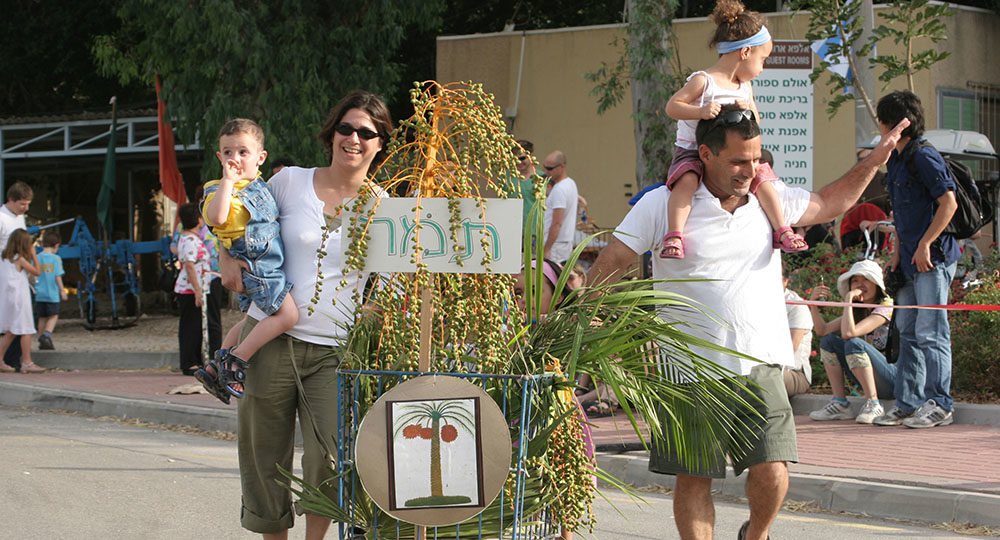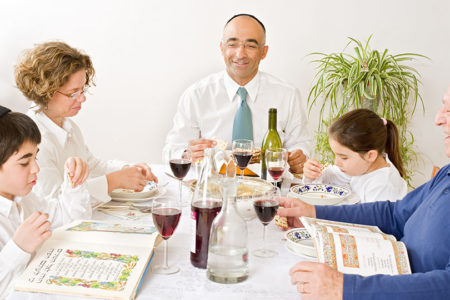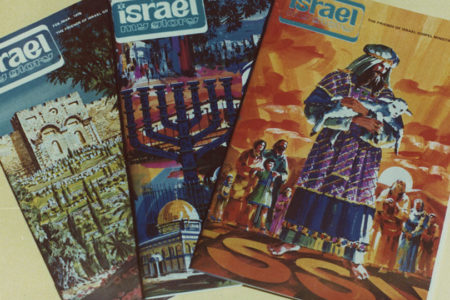Shavuot: The Feast of Weeks
Background and Practice
All of the festivals of Israel give great insight into the New Testament. Shavuot, or Pentecost, as most Christians know it, is no exception. Understanding the background and practice of this festival gives rich insight into the birth of the Church, the promise of the Messiah, and the relationship of Law and grace.
Biblical Beginning
This festival has a variety of names in the Bible. It is called the “feast of weeks” (Ex. 34:22; Dt. 16:10), the “feast of harvest” (Ex. 23:16), and the “day of the first fruits” (Num. 28:26). The Feast of Shavuot is unique in the seven festivals given to the Jewish people in Leviticus 23 in that it is the only one that does not have a fixed date. The dating of the festival is always from “the next day after the seventh sabbath shall ye number fifty days” (Lev. 23:16).
This lack of a specific date has led to different days being suggested for the beginning of the count. The Sadducees understood the Sabbath to refer to the first Saturday of Passover; thus, the counting was to begin on the first Sunday of Passover. This would always place Shavuot on a Sunday. The Pharisees interpreted Sabbath not to mean Saturday but the first day of the rest, the first day of the Passover festival. The counting would thus begin on the second day of the Passover festival. This interpretation does not restrict Shavuot to falling on a Sunday only. The Pharisaic interpretation became the standard and to this day is the generally accepted method of beginning the count among the Jewish people.
The lack of a specific date for Shavuot, as well as the counting from Passover, is seen by many Jewish authorities as a continuous flow or link of the first three festivals, Passover through Shavuot, with Shavuot being the completion of the Passover experience. Another reason for this belief is the lack of the introduction, common to the other festivals, “And the LORD spoke unto Moses” (Lev. 23:1, 9, 23, 26, 33).
One of the most interesting interpretations to come from this is that Passover was an experience of liberation. When one is liberated from something he is freed to something else. In this case it would be to follow the Law of Moses, as it is believed that the Law was given to the Jewish people on Shavuot. This thought has an obvious parallel for Christians. When we accept Jesus as our Savior and Lord, we are liberated from the law of sin and freed to follow the Law of God (Rom. 7).
Historical Practice
Although Shavuot was one of the three festivals on which the Jewish people were commanded to make a pilgrimage to Jerusalem (Dt. 16:16), it did not play an important role in Jewish life, especially outside of Jerusalem. Its initial purpose was entirely agricultural. It was the concluding festival of the grain harvest and a thanksgiving to God.
In biblical days the feast was celebrated by bringing two loaves of the finest wheat and offering them before the Lord, along with the prescribed animal sacrifices (Lev. 23:17–21).
Revelation at Sinai
It was sometime after the destruction of the Temple in 70 A.D. that Shavuot took on an historical basis for its celebration. This transformation helped to give it some very solid traditions that are practiced to this day. Based on Exodus 19:1, this festival became the celebration of the giving of the Torah (Law) to Israel at Sinai. Although this tradition was undoubtedly started after 70 A.D., there was already a move on in Israel to associate this agricultural festival with an historical event.
The Book of Jubilees, written probably in the first century B.C., ties in the Festival of Shavuot with the observance of the pact that God made with man. The Book of Jubilee mentioned the Noahic, Abrahamic, and Mosaic covenants. Although no link is made in the book between Shavuot and the giving of the Law, it does establish the people’s perceived need to have an historical basis for this festival.
It is easy to see how the link between Shavuot and the Revelation could be made after the destruction of the Temple and the scattering of the Jewish people. Without the Temple worship system, Rabbinic Judaism (based on Pharisaic practice) developed as the norm for Jewish religious practice. The Law, both written and oral (the Talmud), became foundational in the life of the Diaspora Jews. What more logical time could be given for the birth of Judaism (i.e., the giving of the Law) than Sinai?
Traditions
A number of traditions have become associated with Shavuot. The synagogue is usually decorated with plants, flowers, and other greens. Dairy foods are often eaten. The Book of Ruth is required reading in the synagogue because of the agricultural basis of the book and Ruth’s embracing of the God of Israel and the Israelites’ beliefs.
Orthodox Jews stay up the entire first night of Shavuot and study the Torah. Reform and Conservative synagogues conduct confirmation ceremonies marking the end of the school year. These ceremonies, for boys and girls between the ages of 13 and 16, are also seen as the confirmation of their allegiance to the Jewish way of life.
The Prophetic Importance
The present-day practices of Shavuot foreshadow a number of biblical truths that are revealed in the New Testament. Although reasons are given by the Jewish community for the historical basis of this festival and the reading of the Book of customs with this agricultural festival is still speculative. It was most likely sometime in the second century A.D. that the reading of the Book of Ruth became a tradition.
The New Testament gives insight into this festival in three areas: the birth of the Church, the kinsman/ redeemer and the Book of Ruth, and Law and grace. Perhaps this gave the Jewish community the impetus to embrace this festival as the birthday of Judaism and the giving of the Law. Although this is only conjecture, the prophetic implications are clearly seen in the New Testament in the fulfillment of this feast.
The Birth of the Church
Jesus commanded the disciples to wait in Jerusalem until He had sent the promise of His Father, which would give them “power from on high” (Lk. 24:49; Acts 1:4). With a total of 120 people, they waited for ten days after Jesus had ascended to Heaven. When the day of Shavuot arrived, the fulfillment of the promise came. The Spirit of God descended upon the group, and they received power to be witnesses for Him. Subsequently, the world was turned upside down by the witness of this first group of believers (Acts 17:6).
It is no coincidence that the Church was brought into existence on this day. Colossians 2:16–17 speaks of the holy days (the feasts) as a picture of the Messiah. Leviticus 23:17 commanded the Israelites to offer “two wave loaves … baked with leaven” to the Lord. Typical offerings in the Mosaic economy contained no leaven.
This celebration of Shavuot brought into being a new group called the Church, made up of two groups of people. Redeemed Jews and Gentiles together formed the body of the Messiah, the Church. Leaven, a picture of sin (1 Cor. 5:5–6), was used to bake the two loaves of bread offered to the Lord. The Church is made up of individuals who still have the sin nature in them and yet belong to God.
It has already been suggested that the Feasts of Passover through Shavuot (including the Feast of First Fruits) should be seen as a continuous process. If you have accepted the true Passover Lamb (Jn. 1:29; 1 Cor. 5:7), you are promised resurrection (1 Cor. 15:20–23) because He (Jesus) is the first fruits of the greater resurrection harvest, and you are part of the body of the Messiah (Acts 2; 1 Cor. 12:13), the Church.
The Church was born on this day. The implication of the feast and the birth of the Church would have been well known to the Jewish believers of the day. Was this the impetus for the Jewish community of about a century later to speak of this day as the birth of Judaism?
The Book of Ruth
The Book of Ruth is a story of love between a Gentile woman and the God of Israel. Ruth had been married to a Jewish man. When he died, her mother-in-law Naomi encouraged her to go back to her Moabite family and heritage. Ruth refused, wanting to join herself to the Jewish people and their God. Her response to Naomi, “thy people shall be my people, and thy God, my God” (Ruth 1:16), has become well known.
As Naomi and Ruth resettled in Israel, a part of the Mosaic Law became incumbent upon Ruth. It was the law of the kinsman-redeemer, which was to redeem the name of her dead husband and provide a family for his inheritance. There were three requirements for a man to qualify as the kinsman-redeemer and take Ruth as his wife. He had to be the nearest kin (unmarried relative), be able to perform this duty, and be willing to do it (Dt. 25:5–10). The nearest relative who met these requirements was Boaz, who married Ruth, and a child was born to them. Ruth was to become blessed, as her son became the grandfather of David and was in the Messianic line.
The Book of Ruth paints a beautiful portrait of the truth of Shavuot. Jesus is our Kinsman-Redeemer. We—Jew and Gentile—are condemned and separated from God by our sin (Isa. 59:1–2). Jesus was willing and able to save us, being Jehovah God. But He had to become our Kinsman to meet all three requirements. That He did when He became a man. Through His redemption we—Jew and Gentile—are placed together in the body of the Messiah (Eph. 2). Ruth (a Gentile) and Boaz (a Jew) became one in marriage (Gen. 2:24). With the Book of Ruth being required reading on Shavuot, what better picture could be given of the Church?
Law and Grace
When the Church was born, Peter preached and about three thousand people gladly received the message and believed in the Messiah (Acts 2:41). The grace of God was evident—about three thousand people received life.
About fifteen hundred years earlier, there had been another Shavuot. At that time also there was an awesome display of God’s power. The Law of God was given at Sinai. The people of Israel had committed a grave sin in their impatience with Moses and God. They had built idols of gold. The required judgment was the cleansing of the camp and the death of the rebellious ones. When this was completed, “there fell of the people that day about three thousand men” (Ex. 32:28).
Make no mistake about the contrast and exactness of the numbers. The Law is holy and good, but it cannot bring life. It is capable of bringing only death (Rom. 3:19–20; Gal. 3:10). Only grace can bring life (Eph. 2:8–9). Throughout the Bible this contrast is made. It is seen even at the giving of the Law. Along with the giving of the Law at Sinai Moses received instructions for building the Tabernacle (Ex. 25:8–9). The Tabernacle was a picture of the ultimate sacrifice that God would provide for us to find grace and life.
Moses gave us the Law; Jesus brought us grace and truth (Jn. 1:17). The Law kills, but life came through the Spirit of God (2 Cor. 3). Shavuot came, the Law was given, and shortly thereafter three thousand people died. At Shavuot the Spirit of God descended, the Church was brought into existence, and shortly thereafter three thousand people experienced life.
The traditions surrounding Shavuot that were developed after 70 A.D. must make us wonder if they were influenced by the obvious linkage developed in the New Testament. Possibly there is no deliberate connection to the New Testament, but the linkage is nonetheless present.
Have you—Jew or Gentile—stepped away from a system of Law and embraced the grace of God through the Messiah? If you do, the Feast of Shavuot will have much greater meaning for you.








Will Feast of Shavuot or Weeks be celebrated in Millennial Kingdom and if so what are the biblical references.
Leviticus 23:21. A law forever in all your dwellings throughout your generations.